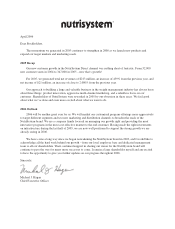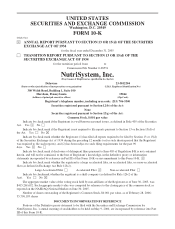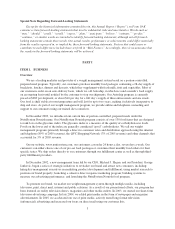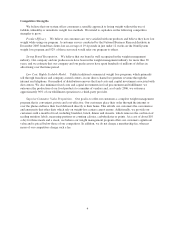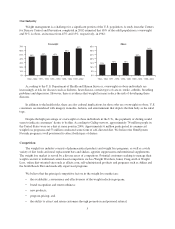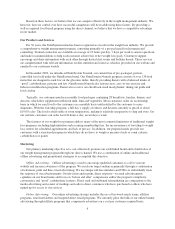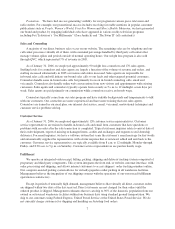Nutrisystem 2005 Annual Report Download - page 9
Download and view the complete annual report
Please find page 9 of the 2005 Nutrisystem annual report below. You can navigate through the pages in the report by either clicking on the pages listed below, or by using the keyword search tool below to find specific information within the annual report.
Our Industry
Weight management is a challenge for a significant portion of the U.S. population. A study from the Centers
for Disease Control and Prevention completed in 2002 estimated that 65% of the adult population is overweight
and 31% is obese, an increase from 45% and 13%, respectively, in 1962:
According to the U.S. Department of Health and Human Services, overweight or obese individuals are
increasingly at risk for diseases such as diabetes, heart disease, certain types of cancer, stroke, arthritis, breathing
problems and depression. However, there is evidence that weight loss may reduce the risk of developing these
diseases.
In addition to the health risks, there are also cultural implications for those who are overweight or obese. U.S.
consumers are inundated with imagery in media, fashion, and entertainment that depicts the thin body as the ideal
type.
Despite the high percentage of overweight or obese individuals in the U.S., the popularity of dieting would
seem to indicate consumers’ desire to be thin. According to Gallup surveys, approximately 74 million people in
the United States were on a diet at some point in 2004. Approximately 6 million participated in commercial
weight loss programs and 53 million conducted some form of self-directed diet. We believe the NutriSystem
Nourish program is well positioned to attract both types of dieters.
Competition
The weight loss industry consists of pharmaceutical products and weight loss programs, as well as a wide
variety of diet foods and meal replacement bars and shakes, appetite suppressants and nutritional supplements.
The weight loss market is served by a diverse array of competitors. Potential customers seeking to manage their
weight can turn to traditional center-based competitors such as Weight Watchers, Jenny Craig and LA Weight
Loss, online diet-oriented sites such as eDiets.com, self-administered products and programs such as Atkins and
the South Beach Diet and medically supervised programs.
We believe that the principal competitive factors in the weight loss market are:
• the availability, convenience and effectiveness of the weight reduction program;
• brand recognition and trustworthiness;
• new products;
• program pricing; and
• the ability to attract and retain customers through promotion and personal referral.
5



